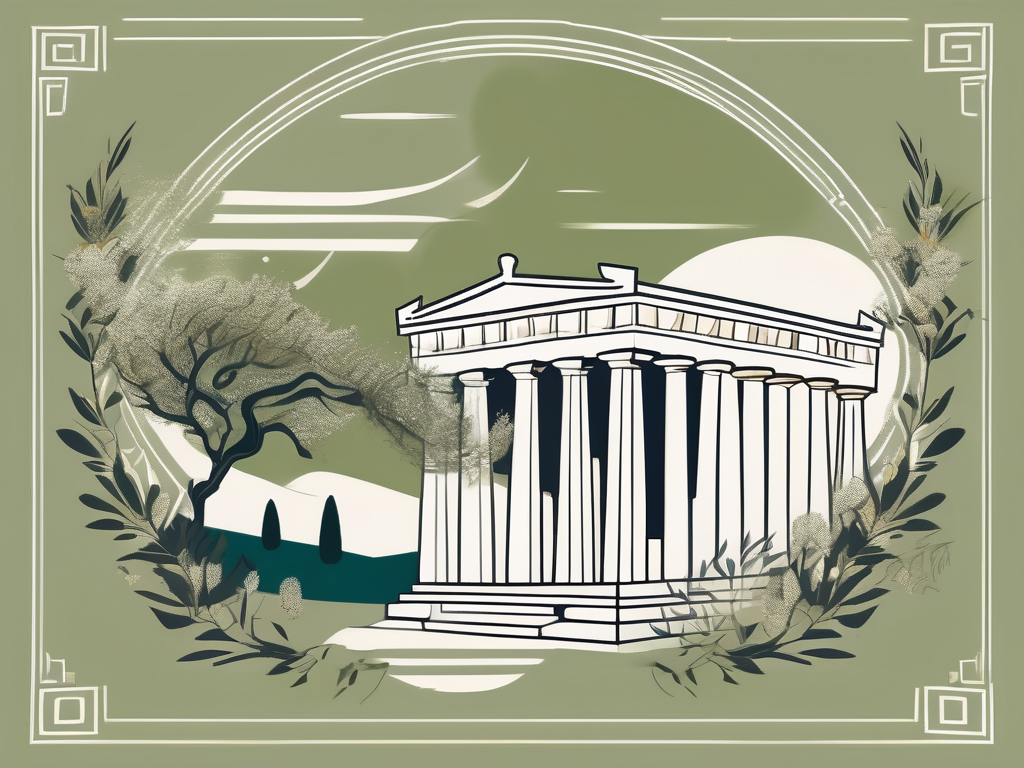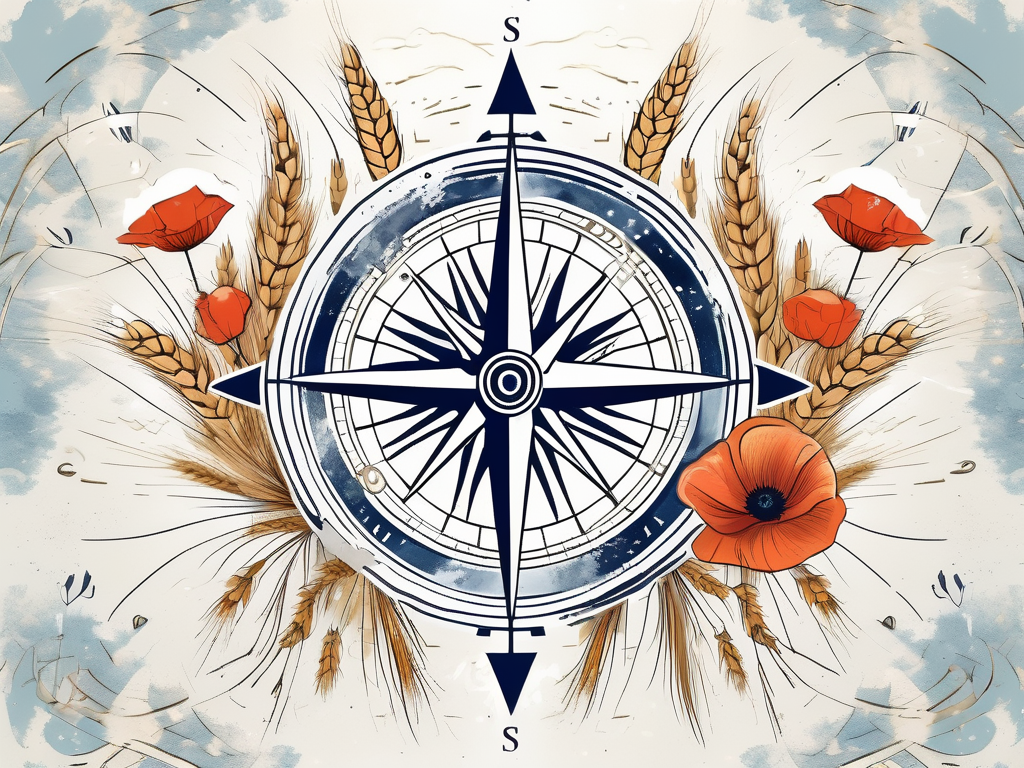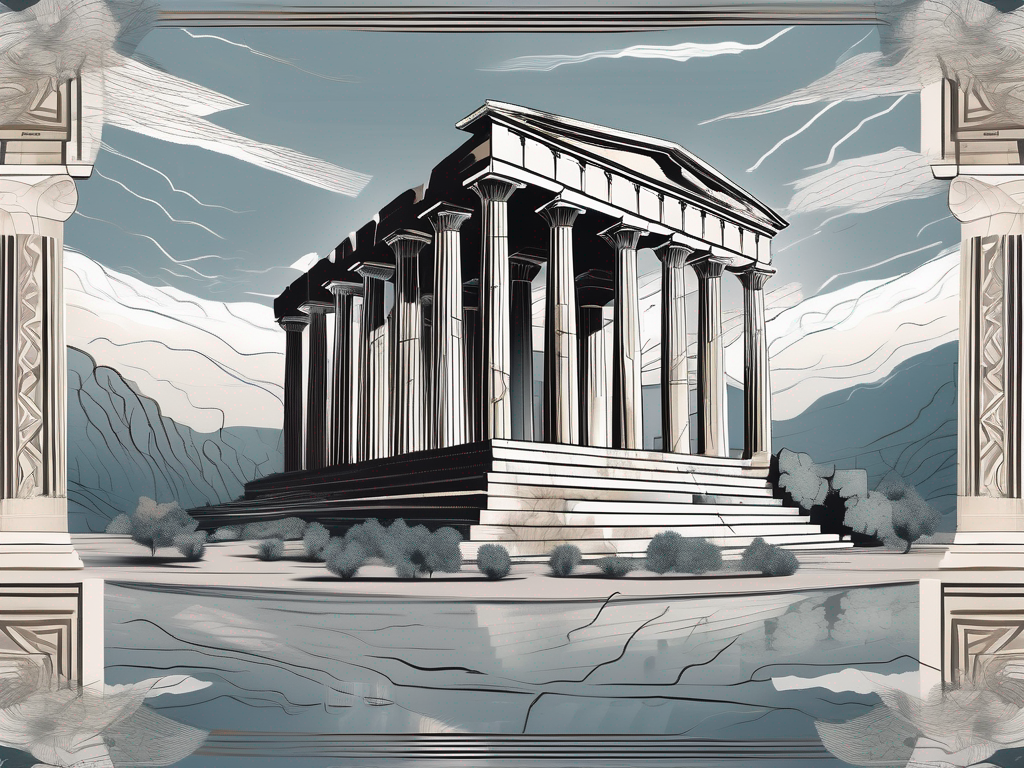In the rich tapestry of ancient Egyptian mythology, few figures stand as tall as the mighty Amun. With his regal presence and awe-inspiring power, Amun reigned supreme, commanding both respect and devotion from the Egyptian people. In this article, we delve deep into the captivating story of Amun, shedding light on his origins, exploring his influence, and debunking common misconceptions that surround his myth.
Understanding the Myth of Amun
The enigmatic tale of Amun begins in the dawn of ancient Egyptian civilization. He emerged as a major deity during the Middle Kingdom, attaining prominence as the god of wind and hidden life. It was in the New Kingdom, however, that Amun soared to unparalleled heights of power and influence, elevating him to a status worthy of Pharaohs and commoners alike.
From his holy sanctuaries to the hearts of his followers, the mythology of Amun unfolded like a mesmerizing mosaic, blending ancient traditions with symbols of the natural world. As we delve into the vast realm of Amun, we uncover the threads that weave together his role and responsibilities within the pantheon of Egyptian gods.
The Origins of Amun in Ancient Egyptian Mythology
Amun’s journey into divinity is shrouded in mystery, as ancient texts offer fragmented glimpses into his early origins. Believed to be the personification of air and the invisible energy flowing through all living beings, Amun was initially associated with the survival of the soul.
Over time, his identity evolved, intertwining him with the sun god Ra to become Amun-Ra—a collective force symbolizing the power of creation, fertility, and the cosmic order. This transformation laid the foundation for the vibrant mythology that would come to shape the Egyptian civilization.
In the sacred texts of ancient Egypt, Amun’s birth is often depicted as a divine event, with his emergence from the primordial chaos representing the first breath of life. This connection to the life force of the universe solidified his role as a deity closely associated with creation and the sustaining energy that permeates all living things.
Amun’s presence in the natural world was believed to be manifested through the wind, which carried his divine essence across the land. The gentle breeze that rustled through the palm trees and the powerful gusts that swept across the desert were seen as tangible manifestations of Amun’s invisible power.
Amun’s Role and Responsibilities in the Pantheon
As the Ogdoad—the group of eight deities representing the primeval forces of chaos—transitioned into the Ennead, a more structured pantheon of nine main gods, Amun’s position became more defined. He assumed the role of the “hidden one,” the ultimate enigma lurking beyond understanding.
Amun’s influence extended far beyond the temples dedicated to his worship. He was regarded as the patron deity of Pharaohs, with whom he shared an intimate connection. The Pharaohs believed their authority and divine right to rule were bestowed upon them directly by Amun, solidifying his significance as a key figure in the socio-political landscape of ancient Egypt.
Amun’s role as the “hidden one” also made him a deity of secrets and hidden knowledge. It was believed that Amun possessed the power to reveal hidden truths and guide individuals on their spiritual journeys. His followers sought his wisdom and guidance in matters of the heart, the mind, and the soul, believing that Amun held the key to unlocking the mysteries of the universe.
In the grand temples dedicated to Amun, elaborate rituals were performed to honor and appease the god. The priests, clad in ornate robes, would chant hymns and offer sacrifices to ensure Amun’s favor and protection. These sacred spaces became centers of spiritual and communal life, attracting pilgrims from all corners of the kingdom.
Amun’s influence was not limited to the mortal realm. In the afterlife, it was believed that Amun would guide the souls of the deceased through the perilous journey to the realm of the gods. His presence provided comfort and assurance to the departed, ensuring their safe passage into the eternal realm.
The Power and Influence of Amun
Amun’s power reverberated through the hearts of the Egyptian people, reflected in his symbolism and iconography. Depicted with a double-plumed headdress resembling ostrich feathers, Amun’s regal appearance conveyed his association with both wind and the pharaohs’ crowning glory—their sovereignty.
His connection to fertility and creation intertwined with the life-giving force of the Nile, enabling the abundant growth of crops that sustained the Egyptian civilization. This association bolstered Amun’s popularity, leading to an ever-growing cult dedicated to his worship.
Amun’s influence extended far beyond his physical representation. His divine presence was believed to permeate every aspect of Egyptian life, from the soaring temple complexes to the humblest of homes. The people sought his favor and protection, believing that Amun’s blessings would ensure their prosperity and well-being.
Amun’s Symbolism and Iconography
Amun’s symbolic representation in art and architecture fostered a deep spiritual connection with devotees who sought his favor. His presence could be felt in towering temple complexes, where awe-inspiring statues portrayed his divine countenance.
Amun’s iconography often intertwined with the ram-headed god, a manifestation known as Amun-Kamutef, representing the generative power of creation. The combination of the ram’s vigor and the god’s commanding aura heightened the sense of divinity that surrounded Amun.
The symbolism of Amun’s double-plumed headdress extended beyond its aesthetic appeal. The ostrich feathers were believed to represent the wind, a force that brought life-giving breezes and carried the prayers of the faithful to the heavens. This connection to the wind further solidified Amun’s association with power and authority.
The Worship and Cult of Amun
The cult of Amun captivated the Egyptian people, drawing them into a labyrinth of rituals and ceremonies. The faithful offered prayers, sacrifices, and sacred processions in honor of their beloved deity. In return, Amun bestowed blessings and protection upon his followers, ensuring the prosperity and harmony of their lives.
As the cult grew, so did the wealth and influence of the priesthood associated with Amun. The temples dedicated to his worship became majestic centers of spiritual and social life, attracting pilgrims from all corners of Egypt and beyond.
The rituals performed in Amun’s temples were elaborate and meticulously choreographed. The priests, adorned in ornate ceremonial garments, conducted sacred ceremonies that were believed to bridge the gap between the mortal and divine realms. The intoxicating scent of incense filled the air as the faithful chanted hymns and offered their heartfelt prayers.
The cult of Amun also played a significant role in Egyptian politics. The pharaohs, as the earthly embodiment of Amun’s power, sought the god’s guidance and approval in their rule. The priesthood associated with Amun held considerable influence, often acting as advisors and intermediaries between the pharaoh and the divine realm.
Amun’s cult spread beyond the borders of Egypt, reaching neighboring lands and even influencing the beliefs of other civilizations. The god’s reputation as a powerful and benevolent deity transcended cultural boundaries, attracting followers from diverse backgrounds.
Amun’s legacy endures to this day, as his influence can still be seen in the remnants of his magnificent temples and the countless artifacts dedicated to his worship. The power and influence of Amun, the wind god and king of the gods, continue to inspire awe and reverence.
Amun’s Legacy in Modern Culture
Amun’s mythical might continues to resonate in the modern world, leaving an indelible mark on literature, art, and even popular culture. His transcendent presence has inspired countless authors, who have woven his essence into their tales of ancient Egypt, bringing the magic and mystery of Amun to new generations.
Amun’s Influence on Literature and Art
The iconic gods of ancient Egypt, with Amun at the forefront, have served as a fruitful muse for literary giants such as Agatha Christie and Rick Riordan. Their vivid portrayals of Amun’s power and influence breathe life into the pages, reigniting the same sense of awe and wonder that captivated the Egyptians centuries ago.
Artists throughout history have sought to capture the elusive essence of Amun, immortalizing his enigmatic aura in sculptures and paintings. The mastery of their craft allows us to witness the divine vibrancy that emanated from Amun, bridging the gap between ancient times and the present day.
The Modern Interpretations of Amun
In the ever-evolving landscape of modern spirituality, Amun’s myth endures. Inspired by the ancient tales, spiritual seekers explore the depths of Amun’s divine realm, finding solace and meaning in his hidden wisdom and mystical energy. The resonance of Amun’s archetype continues to guide and inspire, forming a timeless bond between humanity and the divine.
Debunking Misconceptions about Amun
As with any mythological figure, Amun has become entangled in misconceptions and misunderstandings throughout the ages. By dispelling these fallacies, we can gain a deeper understanding of the true nature and significance of Amun’s myth.
Common Misunderstandings about Amun’s Role
One common misconception is that Amun was solely associated with the sun. While his fusion with Ra created Amun-Ra, a deity encompassing solar attributes, Amun’s original essence as the god of wind remained ever-present, acting as a bridge connecting the seen and unseen worlds.
The Truth behind the Myth of Amun
The truth behind Amun’s enduring myth lies in his multifaceted nature. His influence spanned from the ethereal reaches of the cosmos to the tangible forces shaping the lives of the Egyptian people. Amun’s power emanated from the belief and devotion of his followers, which cemented his place as one of Egypt’s most influential and revered gods.
As we peel back the layers of mystery surrounding Amun, we witness a divine force that transcends time, leaving an everlasting imprint on the tapestry of human history. The mythical Amun continues to captivate and inspire, reminding us of the profound power and influence that gods hold in the hearts and minds of those who seek them.












